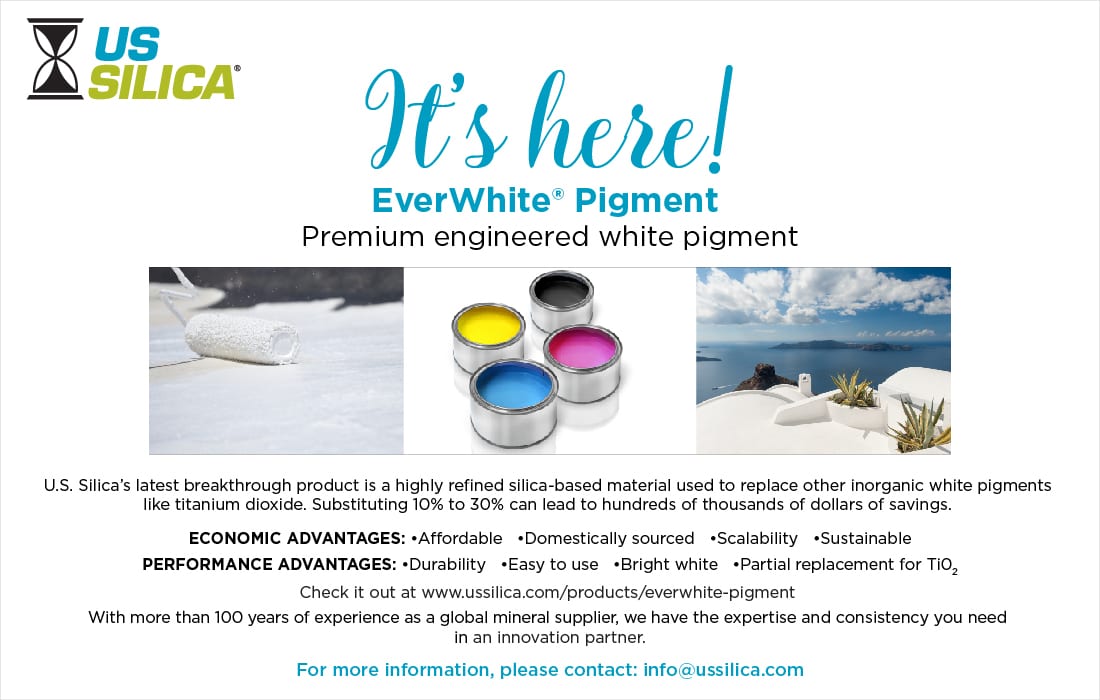Reactive or Proactive?
Integrating Reactive Surfactants to Improve Water Resistance in Coatings
–Credit: zneal / Vetta via Getty Images–
By Indorama Ventures – Indovinya
The quest to manufacture the ideal performing paint is never ending, ensuring it meets both production and end-user requirements efficiently and effectively. In the dynamic world of waterborne coatings, superior water resistance is key to achieving this, and one of the most promising advancements in this area is the integration of reactive surfactants into emulsion polymerization. Indovinya, a global business division of Indorama Ventures, has made significant strides in research to incorporate reactive surfactants as a potential solution to the longstanding challenge of achieving optimal stability and water resistance simultaneously, investigating its multiple applications and benefits, and the implications for future coatings development.
Confronting the Challenge
In the world of paint, all-acrylic polymer emulsions are the go-to option—renowned for excellent exterior durability, UV resistance and stability in harsh conditions. Yet, having inherently high polarity poses a challenge during polymerization, making them more difficult to stabilize compared to their styrene-acrylic counterparts. In the U.S. market, polymerization of these emulsions relies solely on conventional anionic surfactants, which often fall short, resulting in compromised stability and less-than-optimal water resistance.
An Innovative Solution: Reactive Nonionic Surfactants
Introducing an innovative approach, Indovinya has developed a new APEO-free, partially bio-based reactive nonionic surfactant to reduce desorption, migration and segregation during latex film formation, and enhance water resistance. Engineered to react with key monomers and exhibit surface activity similar to conventional nonionic surfactants, these compounds take emulsion polymerization to the next level. When used with conventional or reactive anionic surfactants in all-acrylic polymer emulsions, they ensure stability, small particle size, high incorporation levels, excellent film formation and improved water resistance.
ADVERTISEMENT
Combination is Key: Experimental Insights and Benefits
Meticulous experimentation demonstrated the transformative potential of reactive surfactants. Seeded emulsion polymerizations, using three unique formulations in generating seeds and final latexes to find the optimal incorporation of reactive surfactants for stability, yielded remarkable results. The latexes generated using a combination of 50 wt% conventional anionic surfactant and 50 wt% reactive nonionic surfactant, exhibited enhanced stability, reduced coagulum formation and particle sizes optimized for superior performance. Benefits include:
- Mechanical stability: 40 times less coagulum formed compared to the third of the three formulations.”
- Freeze-thaw stability: Maintained particle sizes of 90-110 nm and low viscosity for a longer period when freezing it to -20 °C and thawing it to 25 °C.
- Reactive surfactant incorporation: Nearly 100% incorporation into latex particles, showing high reactivity with acrylic monomers.
- Film morphology and water resistance: Outstanding blush and whitening resistance, absorbing about 80% less water than benchmark emulsions after 28 days.
TABLE 1–ǀ–Properties of latexes.
This demonstrates that even partially replacing conventional surfactants with reactive surfactants shows promise for improving the water resistance of waterborne paints.
Pioneering a New Frontier
As the coatings industry evolves, the demand for high-performance, durable products continues to grow. The integration of reactive surfactants with conventional anionic surfactants in emulsion polymerization significantly enhances the water resistance of all-acrylic emulsions, marking a paradigm shift in waterborne coatings. This advancement meets the need for coatings with superior stability, film formation and water resistance.
For more information, contact Michael Praw or Bruno Dario.

